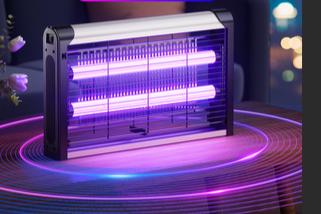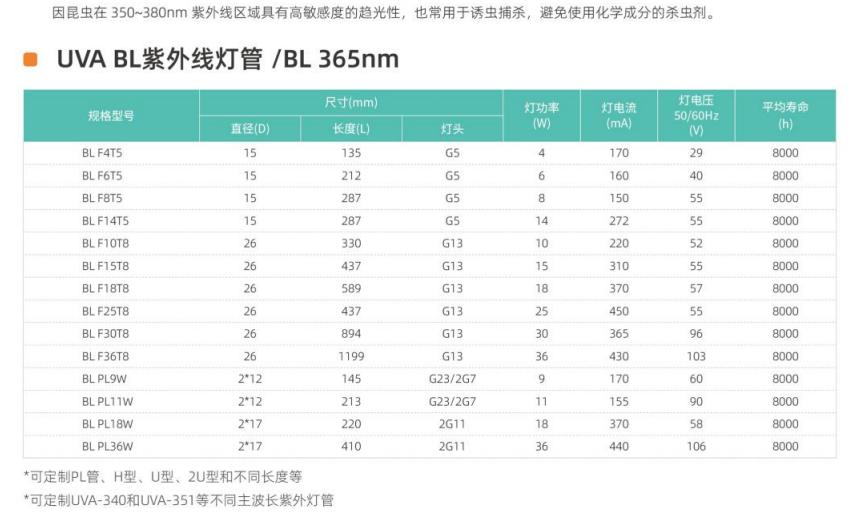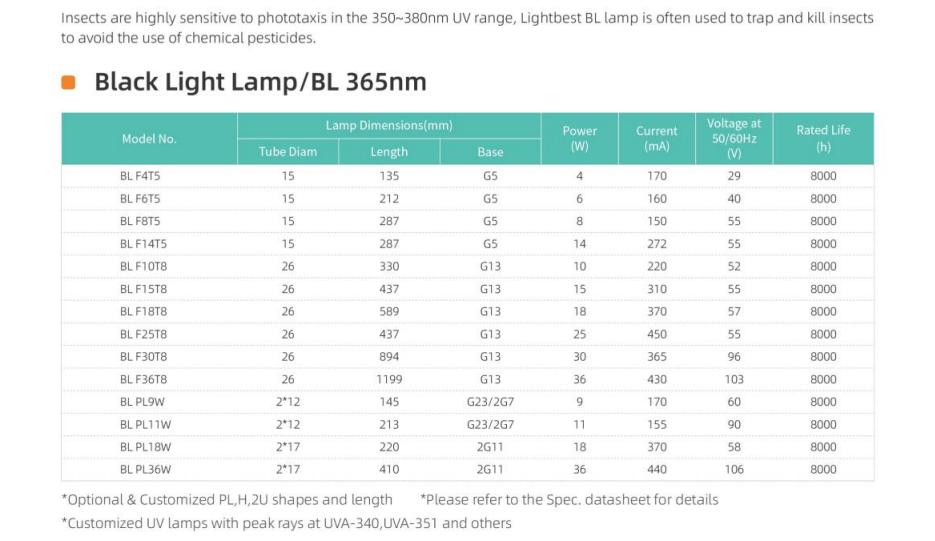1. Functional Positioning
1) Mosquito Repellent Lamp
lCore Objective: Repels mosquitoes through physical or chemical means, reducing the likelihood of them approaching humans or activity areas.
lApplicable Scenarios: Homes, offices, outdoor camping, and other places requiring real-time mosquito prevention.
2) Mosquito Attractant Lamp
lCore Objective: Attracts and kills mosquitoes to reduce their density in the environment, functioning as a mosquito extermination tool.
lApplicable Scenarios: Gardens, warehouses, farms, and other areas requiring long-term mosquito population control.

(Mosquito Attractant Lamp)
2. Working Principle
1) Mosquito Repellent Lamp
Light Wave Repellent:
Uses specific wavelengths of light that mosquitoes dislike (e.g., yellow or orange-red light) to interfere with their vision, prompting them to avoid the light source.
Example: Some repellent lamps simulate sunset spectra to reduce mosquito activity.
Sound Wave Repellent:
Emits ultrasound of mosquito predators (e.g., bats, dragonflies) or male mosquito mating calls to disrupt female mosquito mating behavior, forcing them to leave.
Effectiveness varies depending on mosquito species and individuals, and some studies question its actual efficacy.
Scent Repellent:
Combines natural plant essential oils (e.g., lemon eucalyptus oil, citronella oil) or chemical repellents (e.g., DEET) with volatilizing devices to mask human scent or directly repel mosquitoes.
2) Mosquito Attractant Lamp
Light Attraction:
Uses the phototaxis of mosquitoes by emitting specific wavelengths of ultraviolet light (e.g., 365 nm) or blue light to lure them in.
Often paired with black backgrounds or reflective coatings to enhance attraction.
Bionic Attraction:
Simulates human scent (e.g., lactic acid, carbon dioxide) or body temperature (36–37 °C) combined with light waves, creating dual attraction for female mosquitoes (which need blood to reproduce).
Example: Some high-end attractant lamps release CO₂ or use heating devices to boost effectiveness.
Killing Methods:
Electric Shock: Mosquitoes are electrocuted upon contact with a high-voltage grid.
Adhesive Trap: Mosquitoes are caught on sticky boards.
Fan Suction: A fan draws mosquitoes into a storage container, preventing exposed carcasses.
3. Effect Comparison
1) Mosquito Repellent Lamp
Advantages: Works instantly, ideal for temporary mosquito prevention; no chemical residue, safer for children and pets.
Disadvantages: Effectiveness can be affected by environmental factors (e.g., other light sources); requires continuous operation; cannot completely eliminate mosquitoes.
2) Mosquito Attractant Lamp
Advantages: Long-term use can significantly reduce mosquito density; some models also have repellent functions (e.g., light wave + scent).
Disadvantages: Requires turning off other light sources for best results; slower killing rate; needs regular cleaning of trapped mosquitoes.
4. Safety and Environmental Friendliness
1) Mosquito Repellent Lamp
Physical Repellent Types (e.g., light waves, sound waves): Completely harmless and suitable for all scenarios.
Chemical Repellent Types(e.g., essential oil vaporization): May pose allergy risks; avoid direct skin contact.
2) Mosquito Attractant Lamp
Electric Shock Type: May generate sparks and should be kept away from flammable materials; the high-voltage grid poses potential risks to children and pets.
Adhesive Trap / Fan Suction Type: Generally safer, but adhesive boards require regular replacement and may generate waste.
5. Selection Recommendations
1) When to Choose a Mosquito Repellent Lamp:
Need for instant mosquito prevention (e.g., camping, outdoor activities).
Households with children, pets, or people sensitive to chemical repellents.
Preference for a noise-free, pollution-free mosquito prevention method.
2) When to Choose a Mosquito Attractant Lamp:
Need for long-term control of mosquito density (e.g., gardens, farms).
Living in areas with severe mosquito infestations (e.g., near ponds or rice fields).
Willingness to turn off other light sources at night to maximize efficiency.


6. Integrated Usage Strategy
“Repel + Attract” Combination: Use mosquito repellent lamps (e.g., light waves + essential oils) during the day to prevent mosquitoes from approaching, and switch to mosquito attractant lamps at night—after turning off indoor lights—to trap and kill them, creating dual protection.
Environmental Management: Regardless of the device chosen, pair it with basic preventive measures such as removing standing water and installing window screens to reduce mosquito breeding at the source.
Post time:2025-08-12 16:11:02

